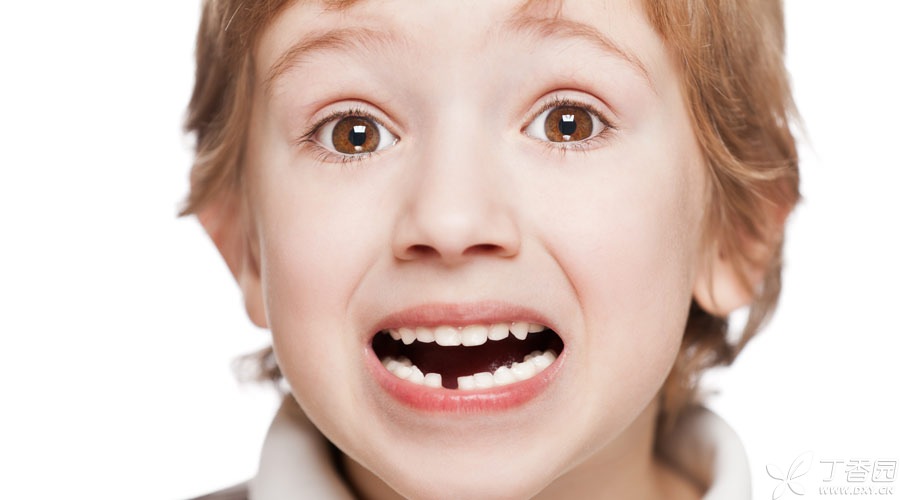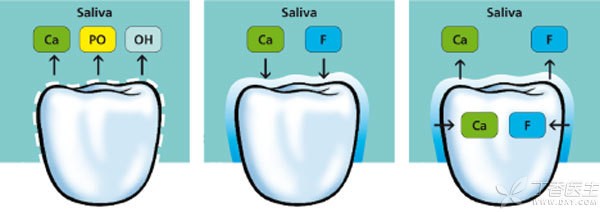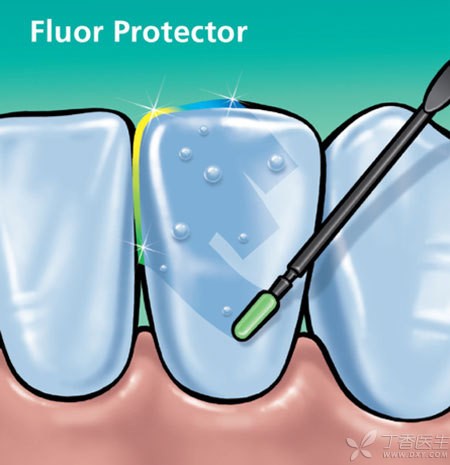
A friend who became a father took a notice from his son’s kindergarten and the school would organize the children to be fluoride-coated next week so that the parents could sign for approval. He came to ask me if this matter was a fraud. Dr. Clove smiled and invited Dr. Xu Tongkai to introduce to you about the application of fluoride to children’s teeth.
Do you want to apply fluoride to your baby’s teeth?
The question about whether to use fluoride toothpaste for children has been written before. Click to view: fluoride toothpaste, the hero of preventing dental caries? Or is it the culprit of fluorosis?
I believe that all the friends who have seen it will no longer doubt that they will firmly use fluoride toothpaste. However, as the children get a notice from the kindergarten, a new problem arises: the dentist contacted by the kindergarten will come to the children to apply fluoride to their teeth. Do you want to apply fluoride to their teeth?
Fluoride, as the name implies, Is the use of high concentration of fluoride smeared on the tooth surface. For local fluoride coating products, the amount of fluoride is generally several times or even dozens of times of fluoride toothpaste. In a very short time, a protective layer is formed on the tooth surface to resist the corrosion of teeth by various factors in the oral cavity and to prevent dental caries. It is like a facial mask.

Who is suitable for or needs local fluoride application? Let’s take a look at the red tape first. The Ministry of Health proposed in the “Specification for Appropriate Technical Operation of Oral Prevention” issued in 2009 that the following people should accept local fluorine use:
(1) Preschool children, primary and secondary school students;
(2) There are already multiple dental caries in the oral cavity;
(3) those with fixed orthotics in the oral cavity;
(4) crowded dentition or irregular tooth arrangement;
(5) enamel demineralization or enamel development defects;
(6) Middle-aged and elderly people with gingival atrophy and root surface exposure;
(7) xerostomia syndrome caused by long-term drug treatment;
(8) those who eat sweets frequently and have poor oral hygiene;
(9) Radiotherapy for head and neck;
(10) Disabled people who cannot carry out oral self-cleaning.
In short, it is people who do not have the ability to maintain oral hygiene in conventional ways, or people who are prone to dental caries due to some special circumstances in the mouth.
Don’t think this matter has nothing to do with yourself, look at Article 8 above. In other words, brush your teeth three times a day and stick to flossing. Worm teeth still emerge one after another. You can also consider trying.
What are the forms of fluoride coating?
There are mainly 3 kinds, fluorine gel, fluorine foam and fluorine protective paint.
Fluorine gel is like toothpaste, but it contains more fluorine. Fluorinated foam is further in form than fluorine gel, easier to operate, wider in coverage, and easier for teeth to absorb fluorine.
Since 2011, Beijing has provided free fluorinated foam dental caries prevention services for children aged 3-6 years old, with a total of more than 2 million person-times, effectively curbing the rising trend of dental caries rate among children in Beijing. Both are good things, otherwise our government will not vigorously promote them.
But on one premise, That is, people who accept fluorine coating must have a certain degree of cooperation. For example, fluorinated foam, It’s like when you brush your teeth, your mouth is full of foam. You should keep it for two or three minutes. It’s best not to swallow saliva for these two or three minutes. When the time comes, you should spit out the excess foam. This requirement is not a big problem for adults, but it is more difficult for young children. It is not recommended for children under 3 years old to use fluorinated foam.
Therefore, please remember that local fluoride application must be carried out by professionals and should not be done by oneself at home.

So can’t little children apply fluoride?
There are also ways, not there is a third kind, fluorine protective paint. I don’t know if everyone has filled their teeth. Before filling their teeth, the dentist will paint something in the tooth cavity, wait for more than ten seconds, and then blow it again with a small air gun.
Fluorine protective paints are applied in a similar manner to this, The dentist cleans the teeth, Then use cotton balls and rolls to isolate saliva, and at the same time prevent fluoride from being swallowed by mistake. Then apply fluorine protective paint on the tooth surface and let it stand for 60 seconds. The protective paint will be dry and hard on the tooth surface. There is no need to worry about excess fluorine being eaten by children. Don’t eat or drink water within one hour after painting, and the protective effect can last for half a year.
This is not something new to what, Many authoritative international organizations have conducted sufficient research on it. In 2006, the American Dental Association (ADA) proposed a guiding article based on clinical evidence for topical fluorine use. Fluorine protective paint is the only recommended clinical interventional prevention method, and fluorine gel or fluorine foam is no longer the recommended treatment for caries prevention in children under 6 years old.
The NHS Oral Health Prevention Guidance Document also points out that fluorine protective paint is the best choice for local fluorine use in teeth for non-drinking water fluorinated areas. There is high-quality evidence for the caries prevention effect of fluorine protective paint on deciduous teeth or permanent teeth.
Therefore, if you compare the 10 groups of people mentioned just now and feel that you, your children or the elderly need fluoride, you can consult your dentist. According to the situation, choose the appropriate form of fluoride.
Therefore, we suggest that children take part in fluoride application.
For preschool children, If the kindergarten organization uses fluorinated foam, it is recommended to participate. However, if there are conditions, it is better to use fluorine protective paint to carry out, which is safer and more effective. Kindergarten if not organized, you can go to the dentist to paint fluorine, especially children who have had worm teeth, because long worm teeth indicate that the baby belongs to the risk of caries is relatively high.
And as far as I know, fluoride is not expensive either. Dozens to 1,200 yuan for a whole tooth. The key is that the child only needs to open his mouth in the process. There is no uncomfortable link in what. It is also very good for the child to adapt to the environment of the dentist. After several times of application, the child’s acceptance of seeing teeth will also be improved.
For children and adults who have already gone to school, they can go to the dentist for fluoride application if necessary. What method can be used, and the dentist can choose according to the situation. Twice a year, or increase the frequency as necessary.
